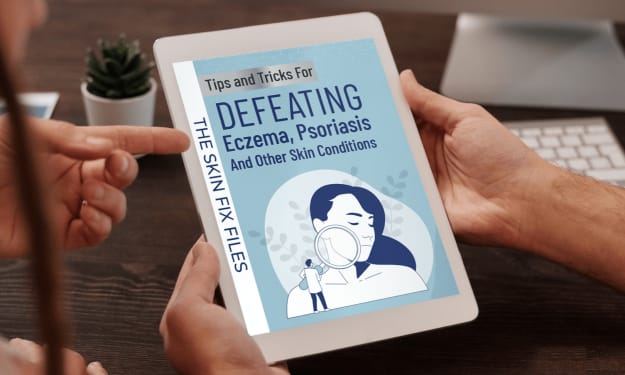Most Common Reasons for HAIR LOSS
Read the article

Introduction: Understanding the Prevalence of Hair Loss
Hair loss is a common phenomenon that affects millions of individuals worldwide, irrespective of their age, gender, or cultural backgrounds. While it is often associated with the aging process, hair loss can occur at any stage of life and is a significant concern for many people. Understanding the prevalence of hair loss requires exploring the underlying factors that contribute to this condition. Various reasons contribute to hair loss, such as genetic predisposition, hormonal imbalances, certain medical conditions, excessive stress, and poor nutrition. This essay aims to explore the most common reasons for hair loss, shedding light on the physiological, psychological, and social impacts it can have on individuals. By delving into the root causes of hair loss, we can gain a comprehensive understanding of this prevalent issue and develop effective strategies for prevention and management.
Before continuing to read the article we would like to offer you a totally FREE E-Book about Hair Loss and how to stop it. Follow this link to get it!
2. Genetic Factors: The Role of Inherited Traits in Hair Loss
Genetic factors play a significant role in hair loss, with inherited traits often determining an individual’s predisposition to this condition. Numerous studies have shown that certain genes play a crucial role in the regulation of hair growth and cycling. For example, variations in the androgen receptor gene, located on the X chromosome, have been linked to androgenetic alopecia, the most common form of hair loss in both men and women. This gene determines the sensitivity of hair follicles to dihydrotestosterone, a hormone derived from testosterone, which can lead to the shrinkage and miniaturization of hair follicles. Additionally, other genes involved in inflammation and immune responses have been identified as potential contributors to hair loss. Understanding the intricate relationship between genetic factors and hair loss is not only essential for diagnosing and treating this condition but also for developing future preventive measures and personalized treatment approaches.
3. Hormonal Imbalance: How Hormones Contribute to Hair Loss
Hormonal imbalances are oftentimes closely linked to hair loss and can play a significant role in its development. One of the primary culprits is dihydrotestosterone (DHT), a hormone derived from testosterone. DHT binds to the hair follicles, causing them to shrink and leading to a shorter growth phase known as the anagen phase. As a result, hair becomes thinner, weaker, and more susceptible to falling out. In women, hormonal imbalances such as polycystic ovary syndrome (PCOS) can also trigger hair loss. PCOS leads to an overproduction of androgens, male hormones that are normally present in women in small amounts. The excess androgens can disrupt the hair growth cycle and result in thinning hair or even bald patches. Additionally, fluctuations in estrogen and progesterone levels, commonly experienced during pregnancy and menopause, can also contribute to temporary hair loss. These hormonal shifts disrupt the normal hair growth cycle, pushing more hair into the telogen phase, where shedding occurs. In conclusion, hormonal imbalances can significantly impact hair loss by altering the hair growth cycle, weakening hair follicles, and leading to thinner and less voluminous hair.
4. Nutritional Deficiencies: The Impact of Poor Nutrition on Hair Health
Nutritional deficiencies can have a significant impact on hair health, contributing to hair loss and other hair-related issues. One of the most common nutritional deficiencies linked to hair loss is a lack of essential vitamins and minerals, such as biotin, iron, zinc, and vitamin D. Biotin plays a crucial role in hair growth and the production of keratin, a protein that constitutes the structural component of hair. Iron deficiency, known as anemia, can lead to a condition called telogen effluvium, in which a significant amount of hair enters the resting phase and eventually falls out. Zinc deficiency has also been associated with hair loss, as zinc plays a pivotal role in the metabolism of proteins and DNA synthesis, both crucial processes for hair growth. Lastly, vitamin D deficiency has been linked to hair loss, as this vitamin stimulates hair follicle growth. Thus, poor nutrition characterized by the absence or insufficiency of these vital nutrients can have detrimental effects on hair health, leading to hair loss and thinning.
5. Stress and Hair Loss: Examining the Link between Psychological Factors and Hair Loss
Another common reason for hair loss is stress. Stress can have a significant impact on the body, including the potential for hair loss. This phenomenon has been examined extensively, and research has found a link between psychological factors and hair loss. When a person experiences stress, the body releases hormones such as cortisol, which can interfere with the natural hair growth cycle. Additionally, stress can lead to behaviors such as pulling or twisting the hair, which can cause breakage and hair loss. It is important to manage stress effectively to minimize the risk of developing hair loss.
6. Medical Conditions and Medications: Exploring the Effects of Illnesses and Drugs on Hair Loss
One major factor that contributes to hair loss is the presence of specific medical conditions and medications. Individuals suffering from certain illnesses may experience hair loss as a side effect of their disease. For instance, people with autoimmune disorders such as lupus or thyroid problems are more prone to experiencing hair loss due to the impact these conditions have on the immune system and hormone production. Additionally, medications used to treat these medical conditions, such as chemotherapy drugs or certain antidepressants, can also lead to hair loss. It is important to explore and understand the effects of these illnesses and medications on hair loss in order to develop effective treatment strategies and provide support for individuals experiencing this challenging aspect of their medical condition.
7. Excessive Styling and Heat Damage: The Dangers of Hairstyling Practices on Hair Loss
Excessive styling and heat damage have emerged as significant contributors to hair loss in recent years. As individuals strive to achieve the perfect hairstyle, they often subject their hair to various heated styling tools such as straighteners, curling irons, and blow dryers. These practices, when done in excess, can lead to irreversible damage to the hair shafts and follicles. The high temperatures generated by these devices weaken the hair strands, making them brittle and prone to breakage. Furthermore, prolonged exposure to heat can disrupt the natural moisture balance of the scalp, leading to dryness and scalp conditions that inhibit hair growth. Additionally, chemically treated hairstyles like relaxers, perms, and frequent hair coloring exacerbate the damage caused by excessive heat. Therefore, it is essential for individuals to reconsider their hairstyling practices and adopt gentler methods to protect their hair from the detrimental effects of excessive styling and heat damage.
8. Age and Hair Loss: Unveiling the Influence of Aging on Hair Thinning or Balding.
In conclusion, age plays a significant role in hair loss, particularly in the form of hair thinning or balding. As individuals age, the natural hair growth cycle becomes disrupted, leading to a decrease in the number of active hair follicles and a shorter growth phase. This, combined with other factors such as hormonal changes and genetic predisposition, contributes to the overall prevalence of hair loss among older adults. Furthermore, age-related hair loss tends to be more prevalent in men than women, with male pattern baldness being the most common manifestation. Although aging is an inevitable process, understanding the mechanisms underlying age-related hair loss could potentially lead to the development of more effective preventive and treatment strategies in the future.






Comments
There are no comments for this story
Be the first to respond and start the conversation.